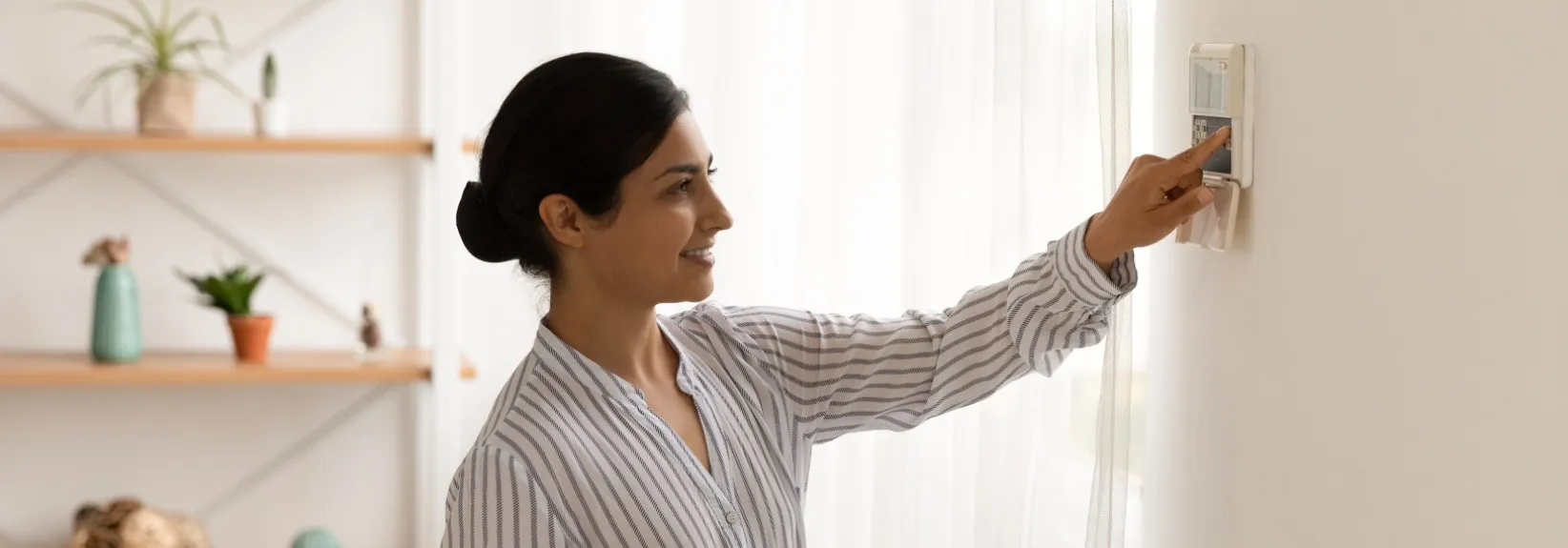How Should I Set My Thermostat for When I’m At Work?
For many hours a day you’re off at work, or maybe at school. Yet your heating or air conditioning keeps working, despite the house being empty. This uses up a ton of energy and wastes money. You can considerably lower this cost by setting the thermostat up or down when you go to work and setting it back to your favored temperature when you get home. But how much should you adjust it?
Here’s what the Department of Energy has to say about thermostat changes:
You can save around 10% a year on heating and cooling by just adjusting your thermostat down 7°-10°F for eight hours a day rather than its typical setting. The percentage of savings from setback is better for buildings in more temperate climates than for those in more extreme climates.
The tinier the contrast between the indoor and outdoor temperatures, the more affordable your overall cooling bill should be. You can easily save energy through the winter by adjusting the thermostat to about 68°F while you’re awake and turning it down while you’re in bed or away from home. For summer, you can follow the same strategy with central air conditioning by keeping your house warmer than normal when you are gone and setting the thermostat to a setting as high as you’re comfortable with when you return and want cooling and to provide humidity control if needed.
You could have been told that these kinds of adjustments aren’t worth the effort because your HVAC has to work harder to go back to your preferred temperature, reversing your savings, but the energy department puts that notion to rest, particularly for heating: “A common misconception associated with thermostats is that a furnace works harder than normal to warm the space back to a comfortable temperature after the thermostat has been set back, resulting in little or no savings. In fact, as soon as your house drops below its normal temperature, it will lose energy to the surrounding environment more slowly.”
Programmable and Smart Thermostats
Even with the benefits of adjusting your thermostat every time you leave for work, it’s easy to miss in the rush of getting ready and on your way. This is one perk of programmable and smart thermostats. You can adjust your thermostat to automatically change to a higher or lower temperature through your average work hours. And with a smart thermostat, you can adjust the temperature (or the programming schedule) from anywhere. This is very helpful if you’ve neglected to change the setting before going on a long trip.Remember the Pets
If you own pets, think about their comfort as well. Cats and dogs with dense fur won’t be comfortable with high temperatures. And pets with less dense fur might not be happy with cold temperatures. The same goes for tropical birds, fish and reptiles. Because temperature preferences deviate widely by breed and species, so it helps to verify the ideal temperature range for your pets.Other Benefits of Changing Your Thermostat for When You’re Away
-
- Carbon emissions – The more you run your heating and air conditioning, the more carbon emissions you generate. Preserving energy minimizes air pollution and greenhouse gasses.
-
- HVAC Longevity – Demanding too much from your heating and cooling can diminish its life expectancy and cause increased maintenance to be needed. It also means the air filter may clog up more quickly, making your indoor air quality worse.
